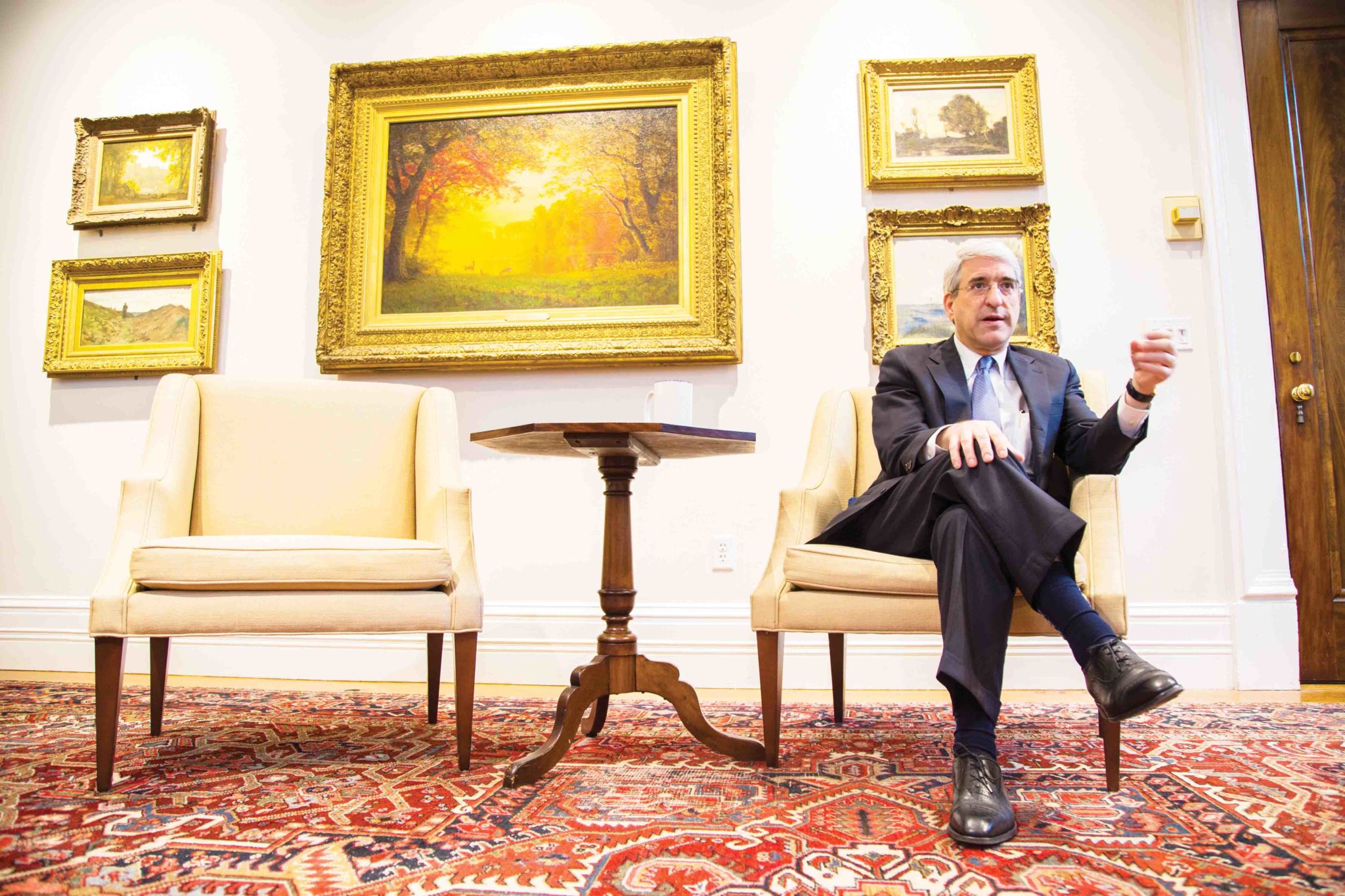
Yale officially launched the silent phase of its next major University-wide capital campaign in July, Vice President for Development Joan O’Neill told the News Tuesday.
In the silent phase of any fundraising campaign, university officials typically solicit donations from a small group of wealthy alumni in the months leading up to the public launch of the campaign. The purpose of the silent phase is to build relationships with potential donors and raise a “nucleus fund” — which traditionally accounts for about 40 percent of the overall fundraising goal — before announcing a full-fledged campaign, University President Peter Salovey said. As he prepares to lead the effort, Salovey will spend a sizable portion of his time fundraising and ironing out campaign strategy alongside O’Neill in the Office of Development at 157 Church St.
The campaign will likely go public in 2021, O’Neill said, after the University finalizes its priorities, branding and messaging for the fundraising push.
“We have now continued to put meat on the bones of our academic priorities and strategic planning, especially most recently in the sciences,” Salovey said. “Beginning this summer, continuing into the fall, a lot more specific conversations, with especially alumni but also with foundations and others and friends of the University.”
Salovey added that he will continue to receive feedback from faculty members on his academic goals, including those outlined in a science strategy report published this summer, as committees across the University work to identify ways to improve Yale’s academic offerings.
Ahead of the campaign launch, O’Neill said, the Office of Development added 40 people to its staff, including writers, analysts, fundraisers and senior managers. According to the Development Office’s website, analysts compile information on alumni activities and fundraising results, adding to the office’s complex donor database. Writers, meanwhile, convert technical pieces of writing, such as grant requests, into proposals for donors.
In an interview last year, O’Neill told the News that the capital campaign would have a more “outward-facing” brand than past campaigns — which had titles like “Yale Tomorrow” or “… And for Yale” — in order to illustrate the University’s global impact. At the time, she said, the campaign would not go public until it had raised at least 40 percent of its overall funding goal.
Michael Regan, a former senior research analyst at the Office of Development, said that the quiet phases of capital campaigns are traditionally kept secret. But at institutions as large as Yale, Regan said, word tends to get out.
The University’s last capital campaign was Yale Tomorrow, which closed in 2011 after raising $3.88 billion under then-University President Richard Levin. The effort financed the founding of the Jackson Institute for Global Affairs, the construction of the Smilow Cancer Hospital and the elimination of tuition for students at the School of Music. Before its public launch in September 2006, the University had already raised $1.3 billion during a 27-month quiet phase — more than one third of the campaign’s initial $3 billion goal.
The current campaign follows years of discussions about the best timing for Yale’s next fundraising push that took place as the University navigated a series of institutional controversies, such as the renaming of Calhoun College.
“When we feel we have momentum, when we feel that potential donors are responding positively, we will announce a campaign,” Salovey said.
Yale raised $595.89 million in 2017.
Hailey Fuchs | hailey.fuchs@yale.edu







